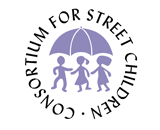Central African Republic
Click to enlarge
Countries
- Benin
- Burkina Faso
- Burundi
- Cameroon
- Central African Republic
- Congo Brazza
- Democratic Republic of Congo
- Equatorial Guinea
- Gabon
- Guinea
- Ivory Coast
- Mali
- Niger
- Rwanda
- Senegal
- Togo
Other Regions
Despite its rich natural resources (such as diamonds and uranium), the Central African Republic remains one of the poorest countries in Africa. The term godobe, by which street children are locally known today, originally referred to the groups of adolescents working along the rail routes in the Mamadou M’Baiki district in the early 1960s. These youth quickly became renowned for stealing and other anti-social activities however, and the word changed to carry a more general meaning of delinquency, and the term spread to cover other groups of children visible on the streets of urban centres, including girls or godobettes. These are children who have effected a total or partial separation from their parents and who spend most, if not all, of their time on the streets. They hang around in small groups that, despite the tribal divisions of wider society, are composed in relation to territory rather than ethnicity or religion. They have their own jargon and values, and can mostly be found around car wash stations, marketplaces and other public spaces. According to a study conducted by UNICEF in 1999, the population of street children is characterised by its youth – 43% are less than 15 years old, and one third of these are orphans due to HIV/AIDS.
{Based on a paper submitted by Madame Beatrice Epaye, Coordinator of the Network for Street Children in Central African Republic and President of Voix du Cœur.}


